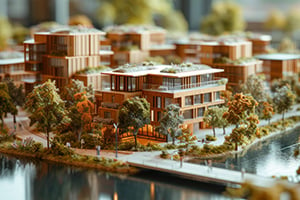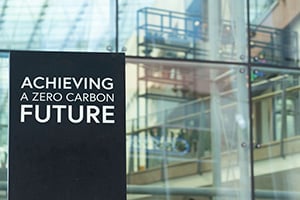By Ariana Nieves,
Marketing Coordinator
Sustainable Investment Group (SIG)
One of the most important factors to consider during a new development is the thermal control of the building. Thermal control regulates the temperature within a structure.
It aids in maintaining steady heating and cooling temperatures during season changes throughout the year. Additionally, it helps to ensure quality and comfort among the occupants inside and increase satisfaction.
Thermal control focuses on the transfer of heat within a building to either keep it cool or warm. To gain control, first, the ways heat can be transmitted must be identified.
Three Ways Heat is Transferred
Heat can be allocated in three different ways: conduction, convection, and radiation. Conduction is the transmission of heat across a solid substance. Convection transfer occurs through a fluid or gas, for example, air. Lastly, radiation is the movement of heat from a warm source to a cold one.
Identifying these transfers of heat makes it easier to regulate and control through varying techniques. For instance, radiation can be redirected using reflective materials. The heat can be directed away to create a cooling effect, or it can be directed into a space to heat the area. This can be done through different materials such as reflective roofing or radiant barriers.
There are many ways to regulate heat such as varying types of insulation and air conditioning. However, now new ways of thermal control are being utilized with stress on sustainability and greener options.
Green Thermal Control Techniques
Green thermal control techniques are gaining in popularity. This is due to their sustainability focus, ability to limit greenhouse gas emissions and their financial benefits. They help save money in the long term because they require less energy.
These green heat control technologies can be broken down into two categories: passive and active. Passive utilizes nature’s ability to heat and cool without using machineries such as air conditioners or furnaces. Active uses a multitude of machine-driven heating and cooling systems.
Some examples of green thermal control techniques are solar power (which can be both passive and active), hydronic heating, ice-powered air conditioners, green coal, wind power, absorption, and biomass.
There are many different forms of sustainable heat control. They are all reasonable options to look into when starting a new development and have many lasting positive effects.
Thermal Control Aids in LEED Certification
Installing proper thermal controls in a new development contributes to the thermal comfort LEED credit. This credit deals with ensuring the security, productivity, and well-being of occupants through delivering quality thermal comfort.
The requirements for this credit are to create heating, ventilating, and air-conditioning (HVAC) systems to meet the ISO and CEN standards. Additionally, individual thermal comfort controls must be provided for a minimum of 50% of individual inhabitant areas. For multiple occupant spaces, a group thermal comfort control can be provided. If the new development qualifies it could earn up to one LEED point in this area.
Overall, thermal control is an important factor in a new development. There are many different options for heat control and finding the best fit for the building is essential to creating energy efficiency and satisfied occupants.
Sources:
Thermal Comfort
https://www.usgbc.org/credits/retail-new-construction/v4/eq115
Controlling Heat Transfer in Green Buildings
https://www.cmdgroup.com/market-intelligence/articles/heat-transfer/
Top 10 Green Heating and Cooling Technologies
What is Thermal Control in Buildings?
https://www.yourownarchitect.com/thermal-control/
© 2021 Sustainable Investment Group (SIG). All rights reserved.



